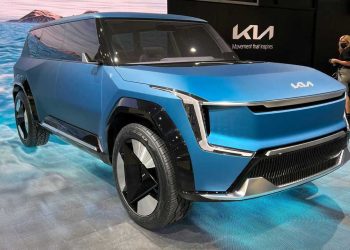With petrol prices reaching unprecedented highs in recent years, many motorcycle enthusiasts and commuters are seeking alternative fuel options to alleviate the burden on their wallets. One increasingly popular choice is converting conventional petrol-powered bikes to run on Liquefied Petroleum Gas (LPG). This conversion not only helps save money but can also contribute to reducing carbon emissions.
However, You can get around a 110km bike with an average of 1kg LPG Gas.
Here’s a detailed guide on converting your petrol bike into an LPG-powered vehicle, but please be aware that this process should only be undertaken by experienced professionals due to safety concerns and legal regulations.

1. Research and Regulations
Before embarking on an LPG conversion project, it’s essential to research the legal requirements in your area. Converting a vehicle to run on LPG may require permits or approvals from local authorities. Complying with safety standards is paramount.
2. Select the LPG Kit
Choose an appropriate LPG conversion kit designed for motorcycles. These kits usually include an LPG tank, regulators, fittings, and other necessary components. Ensure that the equipment you select is certified and meets safety standards.
3. Safety First
Safety should be the top priority throughout the conversion process. LPG is highly flammable, so it’s crucial to follow all safety guidelines and use certified equipment. Work in a well-ventilated area away from open flames or sources of ignition.
4. Tank Installation
Install the LPG tank securely on your motorcycle. The tank’s size will depend on your bike’s capacity and the desired range. It should be placed in a location that is safe, accessible, and compliant with local regulations.
5. Fuel Delivery System Modification
Modify the bike’s fuel delivery system to accommodate LPG. This typically involves installing a vaporizer or converter to change LPG from a liquid to a gas. Ensure that all components are of high quality and suitable for conversion.
6. Electrical Adjustments
Modify the bike’s electrical system to accommodate the LPG components, such as solenoids and sensors. This ensures proper communication and control between the LPG system and the bike’s engine.
7. Tuning and Calibration
Calibrate the bike’s engine to run optimally on LPG. This may require adjustments to the air-fuel mixture and ignition timing to ensure efficient combustion.
8. Testing and Safety Checks
Before using your converted LPG bike, conduct thorough testing for leaks and safety. Ensure that all components are functioning correctly and that there are no potential fire hazards. Safety checks should include pressure tests, leak detection, and functionality tests.
9. Legal Compliance
Ensure that the converted bike complies with all relevant safety and emissions standards in your region. Compliance is essential to ensure that your vehicle is legal and safe to operate on the road.
10. Regular Maintenance
LPG systems require regular maintenance to ensure safety and performance. This includes periodic inspections for leaks, proper functioning of components, and routine servicing.
Converting a motorcycle to run on LPG can offer significant cost savings in the long run, especially in regions with high petrol prices. However, due to the complexity and potential risks involved in the conversion process, it is strongly recommended to seek professional assistance and consult with local authorities to ensure compliance with safety and legal requirements. Additionally, consider the environmental benefits of reduced carbon emissions when making the switch to LPG.
Disadvantages
Converting a petrol (gasoline) bike into a bike that runs on LPG (liquefied petroleum gas) is a complex and potentially dangerous process that requires specialized knowledge and equipment. It’s important to note that such a conversion may not be legal in all regions and could void your vehicle warranty. Additionally, modifying your bike in this way carries inherent risks, including the risk of fire or explosion if not done correctly.






